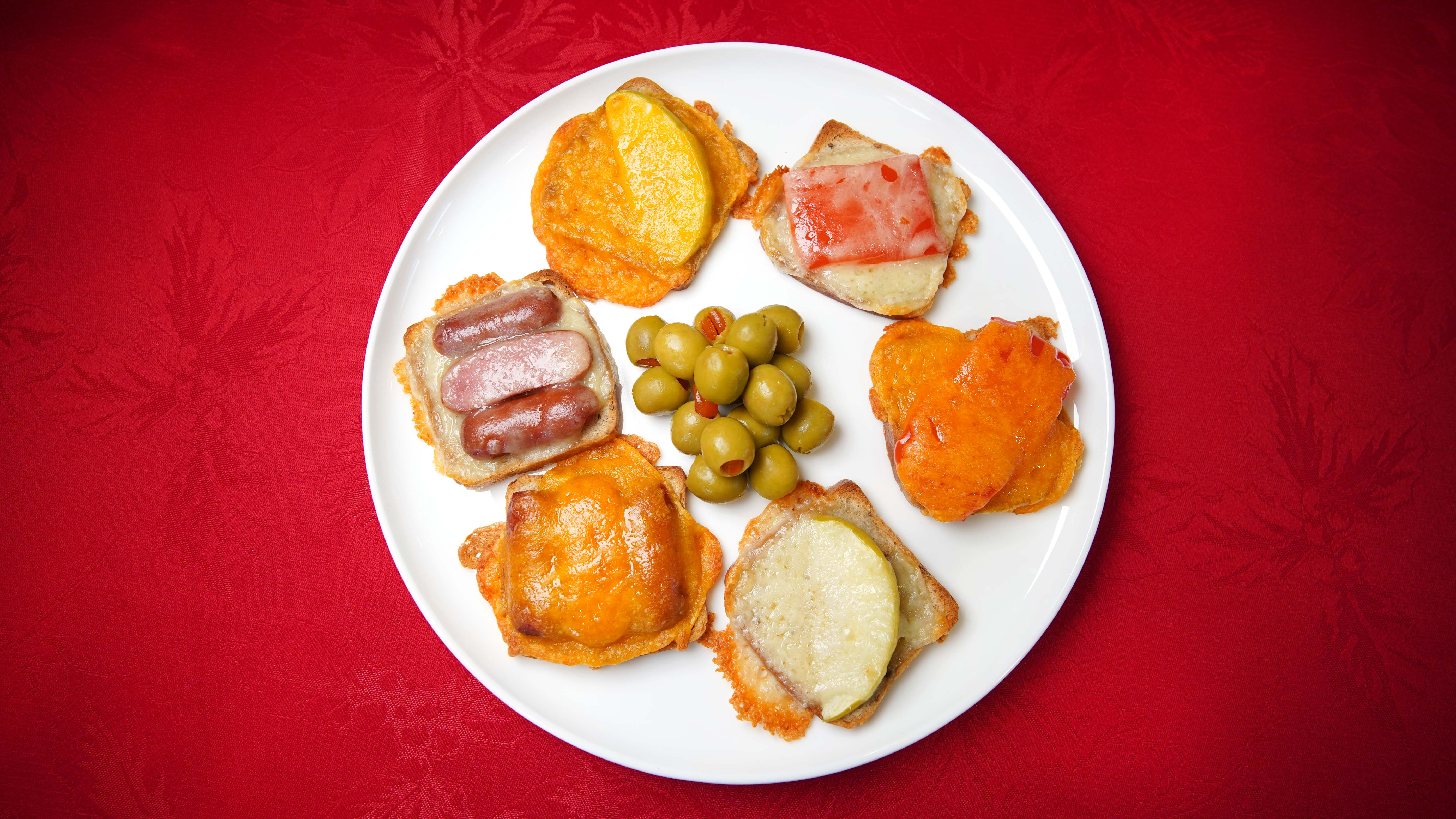Make Cocktail Rye Bread Sandwiches On New Year's Day
We may receive a commission on purchases made from links.
The last few weeks of the year are a thoroughly enjoyable routine of special meals and food-centric events. There's Thanksgiving turkey dinner, trailed by the cavalcade of nogs, tamales, gelt, Bûche de Noël, and cookies throughout December, and then potent-potables-heavy New Year's Eve. By the time New Year's Day arrives, there's a sense of malaise, as we dread the return to routine on January 2. New Year's Day, as a result, is the denouement of holidays.
But it is a holiday. Mail isn't delivered on January 1, and if you're fortunate you get the day off work too. So why not keep the special morsels flowing into the next calendar year? It is on this basis that I humbly submit a candidate for Best and Laziest Holiday Finale Meal: oven-baked cocktail rye sandwiches. This is the perfect food for New Year's Day, and my immediate family has made a tradition of these the last few years.
Cocktail rye (also known as party rye or mini rye) is a long loaf of thinly sliced square bread, roughly the same proportions as a sleeve of saltine crackers. The bread itself is a category and not one specific rye style—it can be Jewish rye, pumpernickel, seeded or seedless—but the length, width, and depth of said bread is the unifying cocktail rye trait.
I immediately associate cocktail rye with Rubschlager, a well-known brand in Chicagoland for decades (and a frequent gift to WGN radio callers during the Clinton administration). Growing up we were introduced to Rubschlager through the AM radio repetitions, but we grew to like the darker, sweeter rye bread. Out of habit I still often call cocktail rye Rubschlager, given its earlier ubiquity. Today, other bread makers like Pepperidge Farm and S. Rosen's have a more prominent role in the Chicagoland cocktail rye scene, especially since Rubschlager's sale to a Canadian bakery in the mid-2010s. Any will do for the purposes of the New Year's sandwiches.
This bread is prized for its simplicity and uniqueness. First and foremost, cocktail rye sandwiches are very hard to make poorly. This is key, because some of us are a little groggier than normal on New Year's Day. I for one don't feel like springing out of bed to make crown roast of pork after the longest night of the year. If you can wake up and find the kitchen, odds are you can preheat your oven and make half of a sandwich.
Cocktail rye, like most any other sandwich bread, is a blank canvas. My wife's family tends to go for the "mini-reuben" approach, with corned beef, sauerkraut, mustard and Swiss cheese. I prefer my stepmom's approach of melting cheddar cheese on top of little smokies sliced lengthwise, green peppers, or a slice of tomato. We've recently experimented with sweeter toppings like peanut butter, brown sugar, and a slice of plum. With a typical loaf of cocktail rye you can yield two cookie sheets' worth of sandwiches, so in reality you can try them all at once.
We'll typically serve our sandwiches open-faced. A preheated 400-degree oven provides enough oomph to melt cheese and sufficiently heat the sandwich contents. A key step is to butter or oil the side of the bread that touches the pan, to get a nice browned crust. I recommend placing the sandwiches directly onto the sheet; you'll get less mess if you put parchment paper under the sandwiches, but also less crust.
The novelty of cocktail rye bread cannot be overstated. Somehow, it just feels special to eat these tiny little sandwiches. Maybe it's because, like so many holiday foods, we spend 364 days a year not eating it. I don't even think about the bread until I start hearing Burl Ives on the radio. But like a Thanksgiving turkey, the time-boxing of the ingredient adds to its mystique.
It's nice to have one last novel (but not elaborate) meal to close the book on the season and commemorate the new year. Cocktail rye sandwiches offer enough rarity and variety to make New Year's Day a first-class food day along with its holiday brethren, without much work. So the next time you wake up on January 1 around brunchtime and stumble into the kitchen to make lunch, now you have something to look forward to.
